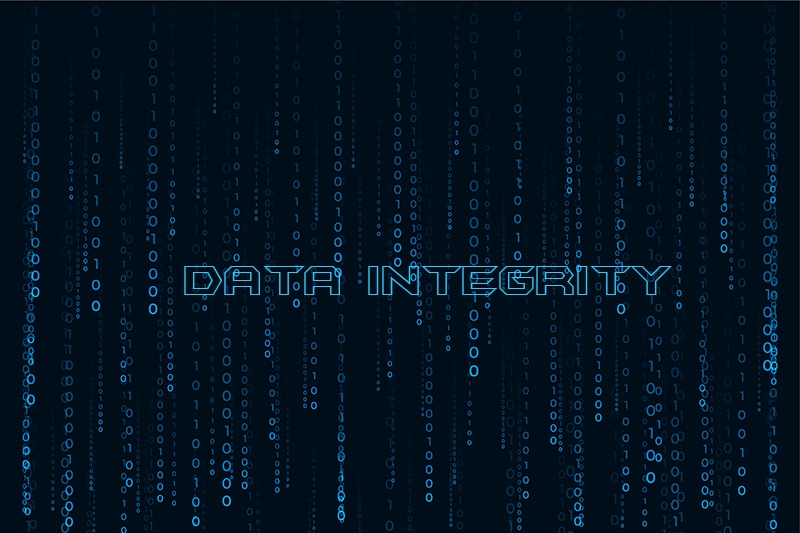Businesses that utilize data to guide decision-making can benefit considerably when data becomes more readily available. Given the power of data, the significance of data integrity cannot be overstated. The most important decisions for your organization may be impacted by a single inaccuracy in a dataset. Data integrity demands the ethical use of data. It combines aspects of security and quality as well as the continuous use and reuse of data. Business data must remain secure; therefore, businesses must have great expertise in ensuring the accuracy of their information. Organizations are therefore on the lookout for data entry services that guarantee clean data and data validation, which are important to avoid any data integrity risks that could result in fraud or breaches.
| Learn more: Cleansing Services: A Must- Have For Your Organization |
With huge volumes of data come data integrity risks which could jeopardize the organization’s reputation and growth. The correctness, completeness, and quality of data as it is preserved over time and between formats is known as data integrity. Data integrity maintenance is a continuous procedure for your business. Although the two ideas are related, it’s important to remember that data integrity and data security are distinct concepts. Data security entails defending data against internal and external threats while upholding the subjects’ privacy. Confirming that the data hasn’t been damaged by those risks helps to maintain the integrity of the data.
Common Data Integrity Issues
One frequent danger to data integrity that many firms face is security breach. Organizations typically have to account for customers because the financial consequences of security breaches are severe. Additionally, organizations must deal with issues affecting their customer base and business reputation, which may result in higher customer turnover. Another common risk to data integrity is noncompliance with regulations. Organizations that fail to adhere to rules like the GDPR are subject to stiff fines. In some cases, they might additionally face legal action. However, regardless of the specific regulatory body, non-compliance with regulations is expensive for firms. Repeated compliance failures may potentially result in a company’s closure. Unreliable data, which reduces productivity and efficiency, is arguably the most frequent data integrity issue. Duplicate records, erroneous data, and data with unclear source are all examples of unreliable data. Whatever the cause, an incorrect dataset hampers the business from making informed decisions and increases operating costs.
Different Methods to Minimize Data Integrity Risks
Since data integrity risk is so detrimental to businesses and data-driven operations, it is essential to put in place a number of strategic countermeasures. However, it is hard to reduce the risk to data integrity with just one strategy. Therefore, it is preferable to utilize a mix of different strategies. Here are some of the ways to mitigate data integrity risks.
- Encourage an integrity culture: The danger to data integrity can be reduced in a number of ways by promoting a culture of integrity. Employees who are honest about their own work and the work of others tend to be more productive. Employees who work in an environment where data integrity is valued are also more likely to report situations in which others cut corners or fail to meet their obligations with regard to the many different facets of data integrity.
- Execute quality control measures in place: Specific individuals and procedures can be put in place as quality control methods to ensure that staff members are handling data in compliance with security and data governance guidelines. Data stewards, for instance, can keep track of the data sources’ genealogy. IT professionals can check the data integrity of security systems.
- Develop an audit trail: A particularly effective method for reducing the risk to data integrity is an audit trail. In order to understand what occurred to data at various points in its lifetime, including its origin and subsequent transformation or use, audit trails are essential. Compliance with regulations can be ensured by knowing these details.
- Make process maps for all important data: Creating process maps for vital data is an essential part of controlling how, where, and by whom data is used. Organizations can have more control over their data assets by mapping these processes, ideally before the data is used. These maps are essential for putting in place the right security and legal compliance procedures.
- Data protection with encryption: Another useful strategy is encryption, particularly when controlling transmission over the internet or between workstations. Producers have some time to detect an attack and take appropriate action since decryption must be applied to stolen data before it can be utilized by anyone else. Keeping track of user IDs and passwords might aid in preventing illegal access because data integrity also depends on the uniqueness of the data.
- Identify and fix any known security flaws: To reduce the risk of data integrity connected to preserving data assets, security vulnerabilities must be removed. This risk-reduction strategy necessitates subject-matter expertise for identifying known security flaws and putting preventative measures in place. For this effort to be successful, technology such as security patches is also needed.
- A software development lifecycle should be followed: Following a software development lifecycle is a vital aspect of controlling the flow of data within an organization. Understanding the various governance rules required to handle data in accordance with regulatory and security requirements requires knowledge of these development lifecycles. This approach is a critical step in comprehending the location and deployment of data and in using that understanding as a base to develop sustainable practices.
- Your computer systems must be validated: Without periodically testing, verifying, and revalidating whether IT systems and personnel are operating in accordance with these protocols, planning, mapping, and dictating what is intended to happen with data are pointless. For instance, IT teams can be given the duty of mapping source fields to target systems using the information from the earlier mapping constructions. Testing and validating the computer systems involved in these procedures to verify if the data supports employee action is the only method to be confident that this process is carried out.
- Install error-detecting software: Anomaly detection services and error detection tools can help track down and isolate outliers, pinpoint the causes of errors, and show how to prevent them in the future. Maintaining a manageable level of data integrity risk requires the entire process.
- Training your employees: Ensure that your staff members understand how to work with data to reduce errors and maintain accuracy. Additionally, training keeps employees committed to overall quality, which is great for the company.
It may seem challenging to maintain the integrity of your vital business data using traditional approaches. However, data cleansing services offer effective error identification and debugging. By depending on cloud integration solutions with integrated tools for data governance and data stewardship, organizations can stay on top of these data integrity threats. Such all-encompassing solutions facilitate the integration of big data, put in place controls for data lakes, and automate key metadata management processes. Additionally, they have controls in place for troubleshooting and observing areas of data management that are crucial for data security, regulatory compliance, and quality.




